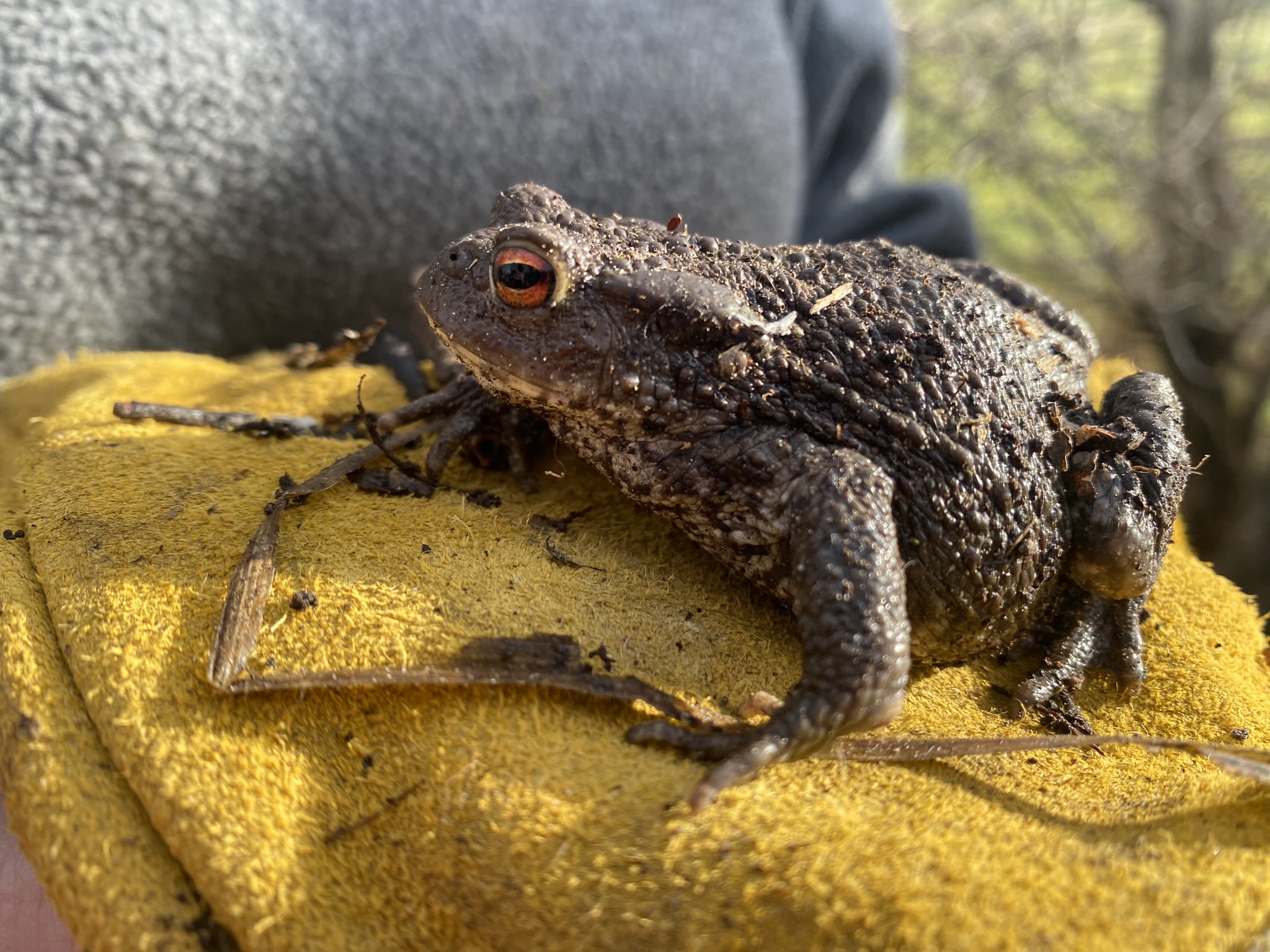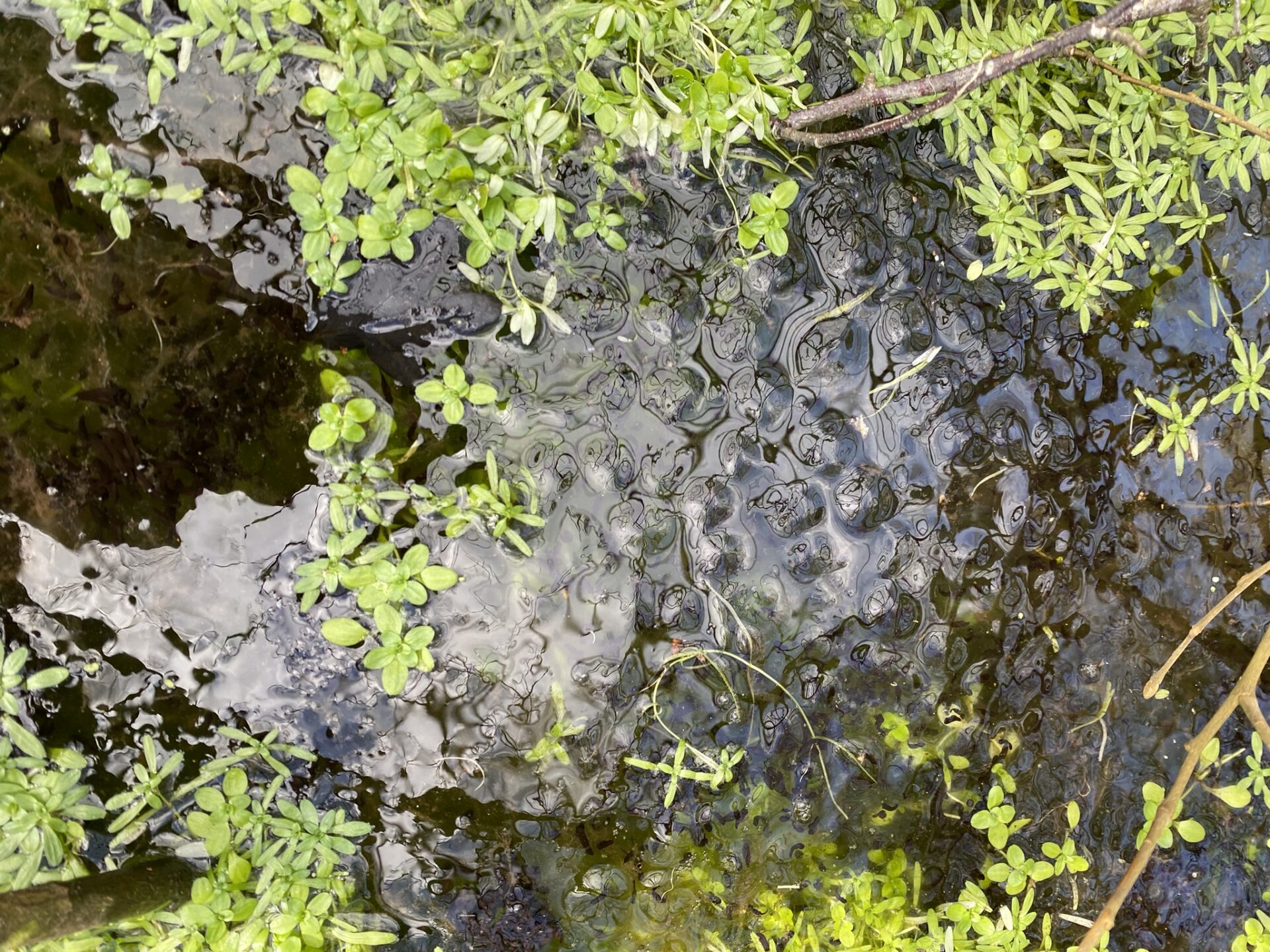Star jelly!
March 2024
March is peak time for frogspawn. Even though, with global warming, it is sometimes sighted nowadays as early as December, now is when you are most likely to see it. Although frogs turn up almost anywhere damp and sheltered on land throughout the year, they have to lay their eggs (the spawn) in water because they are amphibians, creatures that can exist in both elements, depending on the circumstances. So, at this time of year, they travel from where they have spent the winter in woods and gardens, back to where they were born, usually in a pond or lake.
That journey can be quite hazardous, especially if they have to cross roads or railways. That’s why there is a need for the wonderful volunteers who take part in nightly frog and toad patrols scooping up potential victims who might otherwise be run over and carrying them to safety in the local water feature. But frogs and toads aren’t fussy; you can find spawn in quite small puddles especially in woods. If the weather suddenly gets drier, then much of the spawn laid there will never reach maturity so the deeper the water, the better. Frog spawn, by the way, is almost always in a widespread mass because spawning is a communal activity, whereas toadspawn is in long strings of (smaller) black capsules. You can sometimes find hundreds of frogs using the same site. In both species, a male and female have to pair at the point of deposition to ensure that the spawn can reach maturity and produce adult animals. As the female releases her eggs, the male fertilises them and, in approximately 14 days, tadpoles emerge and begin their perilous journey to adulthood.

Many predators threaten them as they grow but, in midsummer, tiny froglets (or toadlets) will emerge from the ponds and disperse into nearby woods and gardens to repeat the cycle. One of the most mysterious phenomena associated with frogspawn is so-called “Star jelly”. This is a clear jelly-like substance that is sometimes found scattered in woods, fields and gardens in the early morning. In the past, it was thought to be some kind of magical substance that fell from the stars on clear and moonless nights in Spring but it is almost certainly the remains of frogspawn that has been swallowed by herons, crows, magpies or other predatory birds which have digested the nutritious embryos in the spawn but then coughed up the worthless mucus that was supposed to protect them.

DAVID HATCHER
Banstead Commons Conservator

